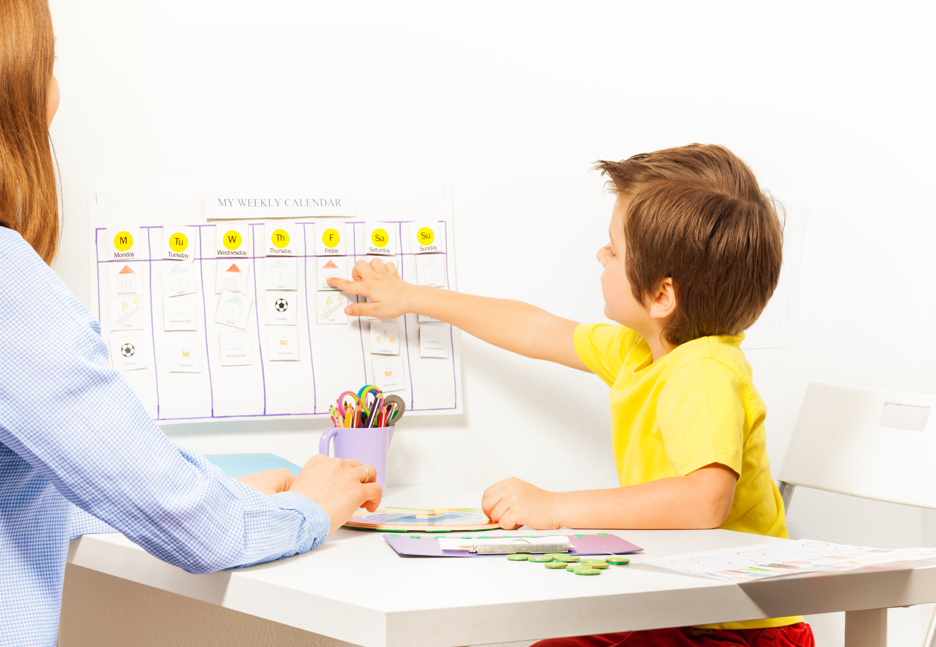If your child has been diagnosed with autism spectrum disorder (ASD), you may be exploring different therapy options to support their development. One of the most researched and widely used interventions for children with autism is Applied Behavior Analysis (ABA) therapy. This evidence-based approach helps children build essential skills while reducing challenging behaviors, promoting independence, and enhancing their quality of life.
What Is ABA Therapy?
Applied Behavior Analysis (ABA) is a scientific approach to understanding and improving human behavior. It is based on the principles of learning and motivation and focuses on reinforcing positive behaviors while minimizing negative or harmful ones. ABA therapy is tailored to each child’s unique needs and abilities, helping them develop meaningful skills that help improve their overall quality of life.
ABA therapy includes various evidence-based teaching strategies and interventions that are backed by decades of research. Its use is endorsed by the American Psychological Association and by the U.S. Surgeon General as an effective treatment for autism.
Who Delivers ABA Therapy?
The Behavior Analyst Certification Board (BACB) is a nonprofit organization that certifies professionals in the field of behavior analysis. It sets the standards for education, training, and ethical practice for professionals practicing behavior analysis. The BACB offers several levels of certification including:
- Board Certified Behavior Analyst (BCBA) – For professionals with graduate-level education in behavior analysis.
- Board Certified Assistant Behavior Analyst (BCaBA) – For individuals with undergraduate-level education who work under a BCBA’s supervision.
- Registered Behavior Technician (RBT) – For paraprofessionals who provide direct behavior-analytic services under BCBA supervision.
Parents and other caregivers are also considered essential members of the treatment team. Family consultation is a key component of ABA services, empowering caregivers to teach new skills and implement interventions in the home beyond ABA therapy sessions, fostering even greater progress.
How Does ABA Therapy Work?
ABA therapy is designed to improve specific behaviors through positive reinforcement. When a child engages in a desirable behavior or acquires a new skill, they receive a reward or reinforcement, encouraging them to repeat that behavior in the future. New skills are broken down into small, achievable steps for the child and presented in a way that the child learns best. Rewards might be social, like praise or a high five, or they might take the form of access to a preferred toy or activity.
ABA therapy involves several key components:
1 – Assessment and Goal Setting: A Board Certified Behavior Analyst (BCBA) will conduct an initial assessment to understand your child’s strengths, challenges, and areas for improvement. Based on this assessment, individualized goals will be developed, and a recommendation will be made for the number of therapy hours per week needed to achieve those goals.
2 – Behavioral Interventions: The BCBA will then train a Registered Behavior Technician (RBT) to implement interventions tailored to your child’s needs. These interventions are designed to teach new skills and replace challenging behaviors with more appropriate alternatives.
3 – Data Collection and Progress Monitoring: ABA therapy is highly data-driven. RBTs collect data on your child’s progress, and the BCBA analyzes that data to determine the effectiveness of interventions and makes adjustments as needed.
4 – Parental Involvement: Parents play a crucial role in ABA therapy. Parents provide feedback on their experiences at home and receive training and support to reinforce positive behaviors beyond ABA therapy sessions.
5 – Generalization: The goal of ABA therapy is not just to teach skills in therapy sessions but to ensure that children can apply what they’ve learned in different settings, such as at home or in school and when in the care of others outside of the treatment team.
Where is ABA Therapy for Autism Delivered?
In-home ABA therapy, school and community-based ABA programs, and center-based sessions are common delivery options of autism therapy for children.
Many children receive ABA therapy at home, allowing for personalized interventions in a familiar setting and increased observation opportunities for parents and caregivers. Schools and community settings, such as parks or stores, may also be used to help children practice social and daily living skills in environments where they spend considerable time each week. Therapy can also take place in clinical centers, where structured environments help target specific skills in a more controlled environment. The flexibility of ABA therapy locations ensures that children learn new skills in the environment that is most effective and convenient for them.
Benefits of ABA Therapy for Children with Autism
ABA therapy has been shown to provide numerous benefits for children with autism, including:
- Improved Communication Skills: Many children with autism struggle with verbal and nonverbal communication. ABA therapy helps them learn how to express their needs, follow directions, and engage in conversations with others.
- Enhanced Play and Social Skills: Children learn how to interact with peers, take turns, share, and understand social cues.
- Increased Independence: Children gain essential life skills, such as dressing, feeding, and toileting, enabling them to become more self-sufficient.
- Reduction in Challenging Behaviors: ABA therapy helps manage behaviors such as tantrums, aggression, self-injury, and property destruction by teaching appropriate alternative behaviors and coping skills.
Final Thoughts
ABA therapy is a valuable and effective intervention that has helped many children with autism develop crucial skills for a more independent and fulfilling life. While every child’s journey is unique, ABA provides structured, research-backed methods to support their growth. As a parent, educating yourself about the best therapy options and working with qualified professionals can make a significant difference in your child’s progress.
If you are interested in ABA services, you can:
- Speak with your pediatrician or other medical provider about ABA to determine if ABA is right for your child. The CDC Milestone Tracker App can help you gather information about your child’s development to discuss with their doctor.
- Make an appointment for a diagnostic evaluation for your child if they have not already been diagnosed with autism spectrum disorder. Most insurance companies require an autism diagnosis prior to authorizing therapy services.
- Contact your local Kyo Regional Director and determine which provider is the best fit for your child and family.
If you’re considering ABA therapy, taking the time to consult with professionals, connect with other parents, and carefully consider your child’s needs can help make sure you invest your time with providers who you can trust. With the right support, your child can thrive and reach their full potential.




